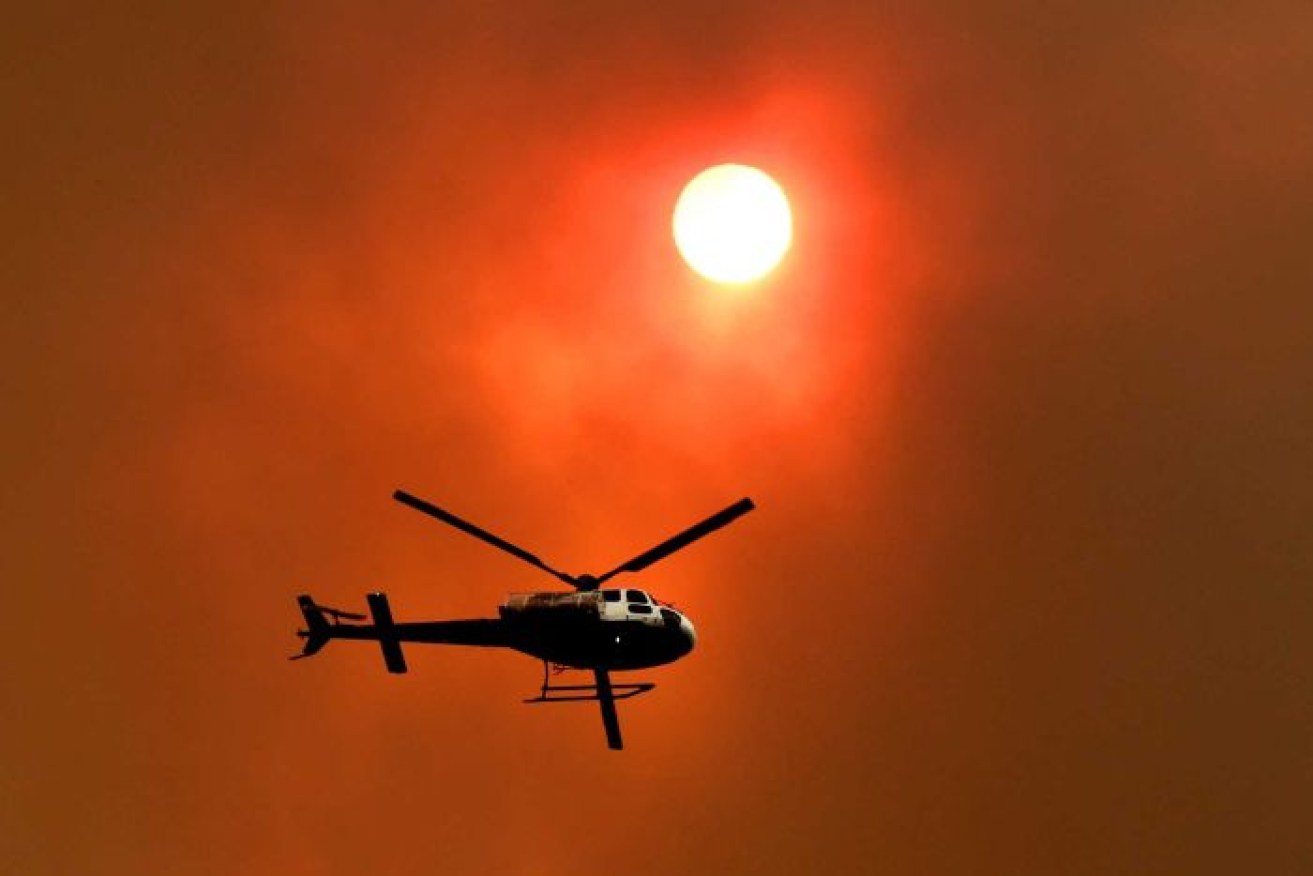This is how most bushfires in Australia start, and how we know

Communities are the focus on the ground, but people are also wondering: Where is Scott Morrison? Photo: AAP
As fires continue to burn in different parts of Australia, investigators work to provide answers on the exact causes of devastating blazes.
Last week we learnt that the Binna Burra fire, which destroyed the historic Binna Burra Lodge in south-east Queensland, was started by a carelessly discarded cigarette.
And the Gold Coast hinterland bushfires the week before may have been started by army live-firing exercises at the Kokoda Barracks, a spokesperson for the Australian Defence Force has conceded.
We know that hot, dry and windy weather increases the risk of fires starting, but here’s what we know about what actually provides the spark.
The nine categories of bushfire ignition
Fire investigators have nine categories for the ignition sources of fires.
Smoking: Smoking isn’t as common a source of bushfire ignition as we might think. There have to be some really specific conditions for a flicked cigarette to spark a fire – temperatures generally need to be above 27 degrees Celsius, and humidity below 22 per cent. And the cigarette needs to land in a loose fuel bed, and at a quite specific angle, according to Richard Woods, who runs Wildfire Investigations and Analysis consultancy.

The majority of bushfires are started either intentionally or unintentionally by people. Graph: Australian Institute of Criminology
Fires that start by the roadside are more likely to be ignited by burning pieces of carbon ejected from car exhausts than a cigarette butt, said Mr Woods, who is also an adjunct lecturer in wildfire investigations at Charles Sturt University.
However, he warned that we’re currently facing weather conditions in which a cigarette could cause a fire, and we need to take every precaution we can to avoid providing a spark.
Police have said that two teenagers have been questioned about the fire that destroyed the Binna Burra Lodge, and that a discarded cigarette was likely the cause.
Burning off/debris: Burning off is a regular source of bushfire ignition.
Two men were charged with ignoring a fire ban and “setting fire to the property of another person”, after the Carwoola fire in southern NSW that destroyed eight homes, numerous vehicles and livestock in 2017.
Arson: The motivations for why people commit arson are varied and complex, but arson is behind a large number of bushfires in Australia and internationally.
While figures vary, around half of all bushfires in Australia are either known to be deliberately lit or are considered suspicious, according to the Australian Institute of Criminology.
Police are treating several blazes around NSW as suspicious.
Railway cause: Railway has its own category, as trains are a surprisingly common source of bushfires. Brake failure in trains can throw out a wall of sparks, sometimes igniting dry vegetation along the side of the tracks and across significant distances.
Burning carbon embers thrown from train engine exhausts can also start bushfires.
Campfires: Embers from campfires, and campfires that aren’t properly extinguished are a bushfire hazard. Many popular campsites have moved away from open campfires, and provide fire rings to contain embers.
Equipment use: Chainsaws, angle grinders, mowers, etc. Using grinders or welding equipment outdoors is not permitted during a fire ban because of the sparks they throw.
According to Sunshine Coast police, several fires started on the Sunshine Coast in September from sparks thrown by lawn mowers.
Children: Children are also categorised separately, as they are often implicated in starting fires, but usually they’re considered to be out of curiosity rather than malice.
Several fires in the NSW 2013 bushfire season were tracked to children. And police have charged a juvenile with starting a Central Queensland bushfire that destroyed 14 homes this week.
Lightning: It’s the most common ignition source in remote areas, but not all lightning is equally likely to start a fire, according to Mr Woods.
“Positively charged lightning is far more likely to start a fire,” he said.
“Positive charges only make up about 10 per cent of lightning strikes.”
Lightning sparked the 2015 Esperance fires that killed four people, and lightning strikes are believed to be the source of some of the fires that have recently hit Queensland and NSW, according to Mr Woods.
“In the recent fires of northern NSW and Queensland, it was reported that there was a big lightning band that went through the area.”
Miscellaneous: Power lines, firearms, blasting, glass refraction, electric fences, and more.
If army exercises turn out to be the culprit in the Gold Coast fire last week, it won’t be the first time, according to Mr Woods.
“There’s a case in NSW which occurred in 2013 that was known as the State Mine fire,” he said.
“What happened there was that they were doing controlled explosion of ordnance that caused a fire that then escaped.”
Electric fences and power lines are also common sources of ignition, but glass refraction – where sunlight is concentrated through a discarded glass bottle – is so rare it’s almost a myth, Mr Woods said.








